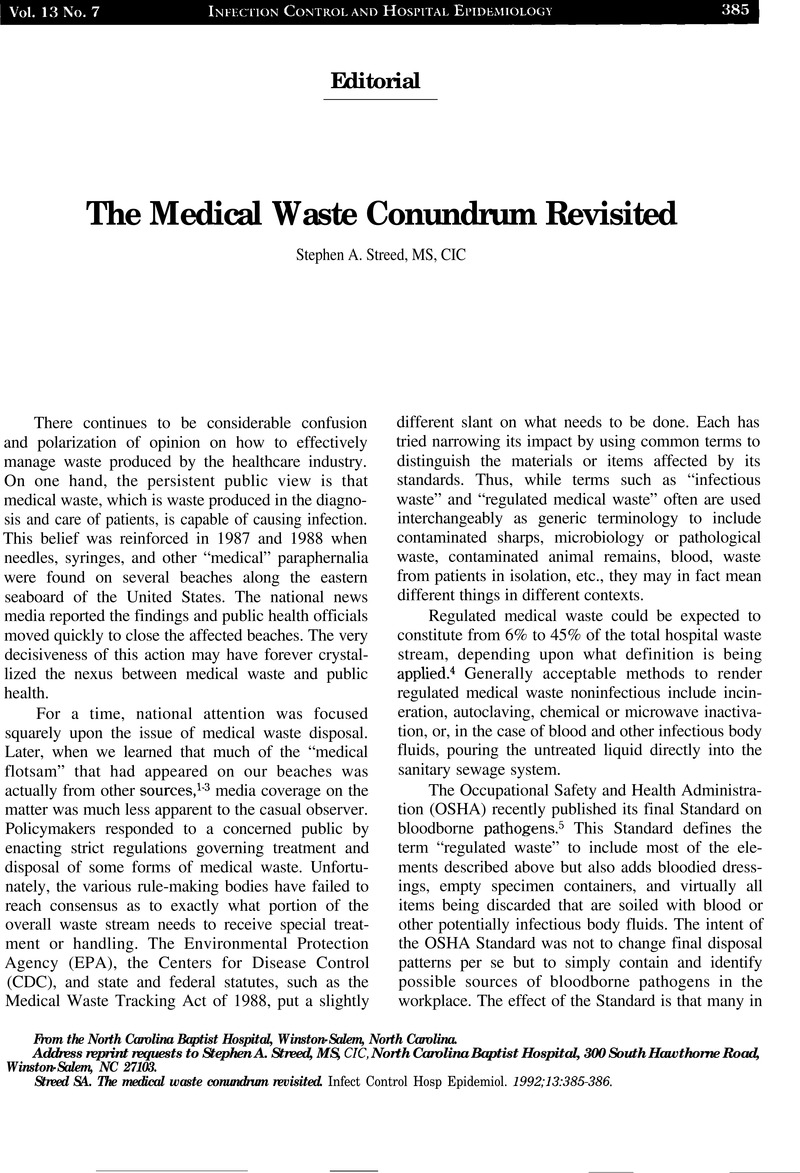Crossref Citations
This article has been cited by the following publications. This list is generated based on data provided by Crossref.
Birnbaum, David
1993.
Medical Waste.
Infection Control & Hospital Epidemiology,
Vol. 14,
Issue. 1,
p.
7.
Phillips, G.
1999.
Microbiological aspects of clinical waste.
Journal of Hospital Infection,
Vol. 41,
Issue. 1,
p.
1.



